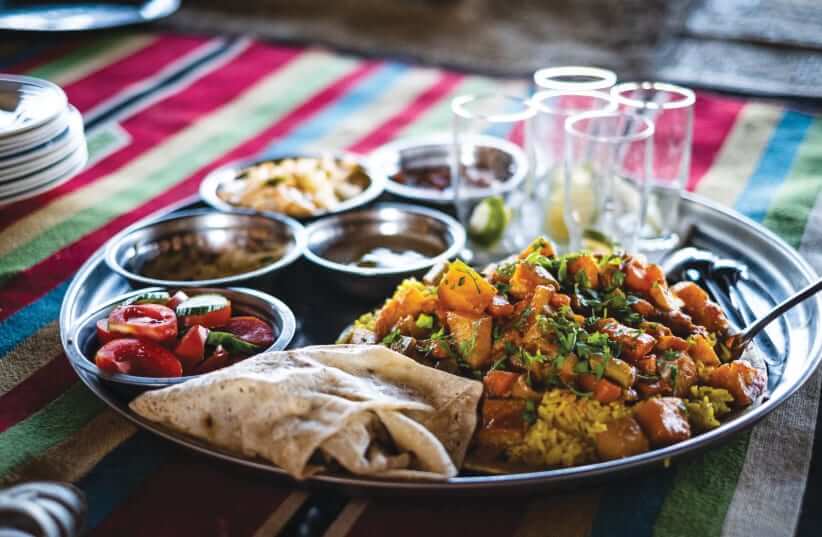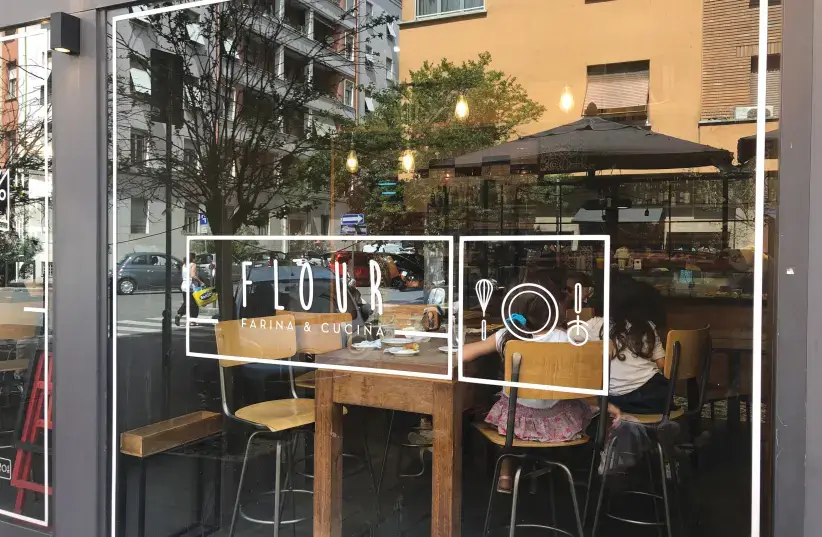View the original article on The Jerusalem Post
WADI REIR. Typical vegetarian dish of the Negev’s Bedouin. (photo credit: Courtesy the establishments)
The mouthwatering photos of dishes are an intrinsic part of Savory Flavors, along with old photos of Jewish communities.
The only detail not clarified in the title of Ron Diller’s new book, Savory Flavors: A Culinary Journey through the Middle East, North Africa, East Africa, South Asia, Balkans, and Caucasus Regions, is that all 67 of the ethnic restaurants it showcases are located in Israel.
Savory Flavors is part coffee-table book and part guidebook. The colorful sacks of spices and grains featured on the cover of the comprehensive and informative Savory Flavors hint at what is to come in the 19-chapter, 263-page book with 258 photos. It features fascinating conversations with the owners or chefs of the restaurants, along with essays about the history of the original regions and ethnicities of the dishes. It is not a book of recipes.The mouthwatering photos of dishes are an intrinsic part of Savory Flavors, along with old photos of Jewish communities. Maps are also provided to help find recommended off-the-beaten-track establishments, such as in Rahat, Ramle, Kfar Kama, Nazareth, and Peki’in.
A labor of love for delicious and diverse food
The project, which took Diller two years to complete, is clearly a labor of love and the result of his life-long connection to unique food establishments.His grandparents, immigrants from Poland and Austria, opened Diller’s Strictly Kosher Restaurant in San Francisco, California, during the Great Depression. It became the largest and most popular kosher restaurant in the Fillmore District, with people driving over an hour from San Jose to sample its authentic Austro-Hungarian Jewish cuisine. The restaurant functioned for 35 years.

While a student at San Francisco State University, Diller wrote a never-published guide to small, ethnic, family-owned restaurants in San Francisco. The manuscript, titled A Cab Driver’s Guide to Gourmet Dining, featured what Diller described as “some 50 affordably priced, ethnic food, off-grid, hole-in-the-wall restaurants, including Chinese, Peruvian, Nicaraguan, and Salvadoran cuisines.”
In 1993, however, Diller set aside work on his book and moved to Israel. Subsequently, he wrote From Darkness to Light, a 2021 book featuring the testimonies of six Holocaust survivors who rebuilt their lives in Israel. He also founded Investor, a publication he describes as “the first English-language international venture capital tech magazine.”
Savory Flavors represents a return to Diller’s passion for out-of-the-ordinary restaurants. In the 24 months he spent researching it, he visited and dined at each of the 67 affordably priced venues and engaged the owners and chefs in conversations about their former lives in their motherlands, their immigration and absorption into Israel, and their ongoing connection to traditional family recipes.
The photos and captions accompanying each historical essay provide readers with a feeling of being in each place at that particular moment in history. There are even pictures of the Yemenite Quarter in Tel Aviv (est. 1906) from Israel’s National Photo Archives. One photo, on page 250 of Savory Flavors, is captioned: “Shlomo, working at his trade (as shoemaker) since 1932, outside his niche at the roadside entrance to Carmel Market Tel Aviv, circa 1975.” There are also pictures of “recently arrived children from Yemen in the Rosh Ha’ayin camp near Petah Tikva, circa 1949” and photos of Yemenite manuscripts and documents from 1580 and 1645 (page 258).
Diller makes delightful discoveries in each ethnic group. On page 91, to introduce the 12-page chapter on Georgian (Caucasian Region) cuisine, he provides a photo of 12 kippah-wearing boys and a bearded hat-wearing rabbi captioned: “Immigrant students from Georgia during a Hebrew lesson at the Chabad yeshiva school in Lod, circa 1971.” The chapter concludes with an essay by Eli Goldstein of Ashkelon Academic College titled “Historic Profile of Georgia’s Jewish History.”
Diller worked hard to track down color and black-and-white photos from the establishments, archives, and collectors. These are meticulously footnoted and credited throughout the book. In addition to photos, each chapter includes a box describing several favorite dishes, as well as the venue’s address, phone number, year of establishment, opening hours, and kosher status, and a map of the neighborhood. Diller indicates the kosher status of each restaurant by using three categories for kosher: “Yes,” “No,” and “Yes (no certificate).”

The write-up for Little India, a kosher-certified vegetarian restaurant in Beersheba, established by Hanoch Stanker in 2006, features various types of samosa or pakora, and main courses, such as Malay kofta (dumplings), palak paneer (ground spinach), chana masala (chickpeas), and anda curry (curry potatoes) – accompanied by various roti (Indian breads) and ending with a dessert banufi (milk jam cake) or gulab jamun (milk powder ball).
Famed for its delicious food, Shimon the Soup King is located in the Yemenite quarter at 28 Yehya Kapah St. in Tel Aviv. It was established in 1973 by Shimon Sa’ada and is now run by his daughter Yonit. Savory Flavors features photographs of its various soups and breads that will catch your eye and whet your appetite.
Another example of a legendary fare Savory Flavors listing is Oren Sasson’s Istabach Kurdish restaurant (est. 2014) at 1 Hashikma St. in Jerusalem’s Mahaneh Yehuda market, illustrated with colorful pictures of Kurdish shamburak with flavorful fillings of meat and spices.
The clearly curious Diller has already set his sights on other projects, notably exploring the lives of Jews belonging to the 12 Lost Tribes of Israel.
His particular fascination is with the Bnei Menashe tribe, residing in India’s northeastern states Mizoram and Manipur, near the border of Myanmar.
Diller notes that there are many more remote places in the world where Jews have maintained hidden connections to Judaism. We look forward to further volumes with his fascinating stories about their history and food.
The reviewer is a freelance writer and contributor to The Jerusalem Post. He lives in New Haven, Connecticut. The book is available at Emek Refaim Books in Jerusalem.
- SAVORY FLAVORS: A CULINARY JOURNEY THROUGH THE MIDDLE EAST, NORTH AFRICA, EAST AFRICA, SOUTH ASIA, BALKANS, AND CAUCASUS REGIONS
- By Ronald J. Diller and seven other authors
- Kindle Paperback
- 276 pages; $ 23.50




